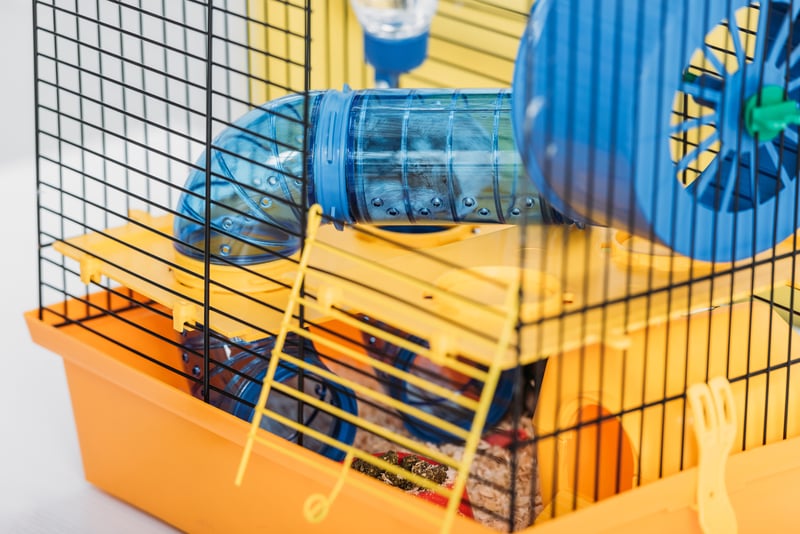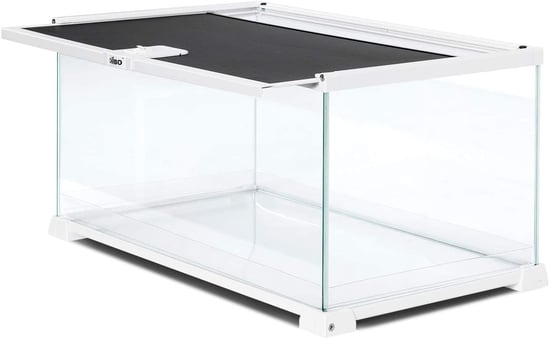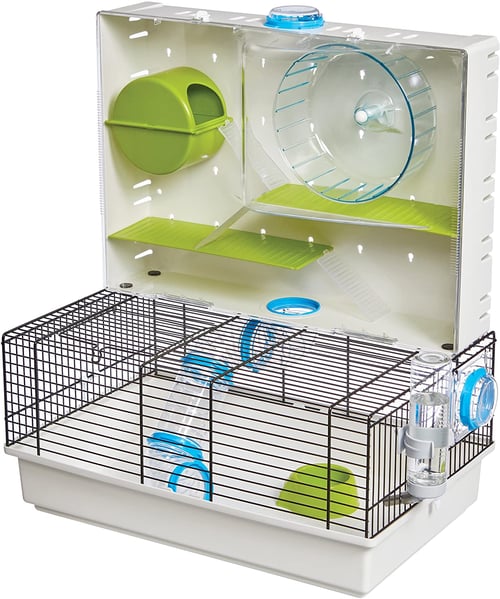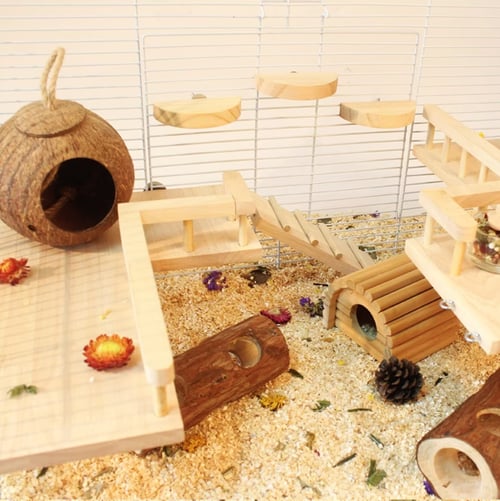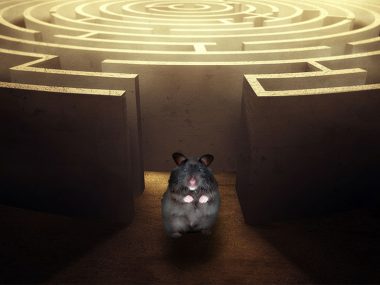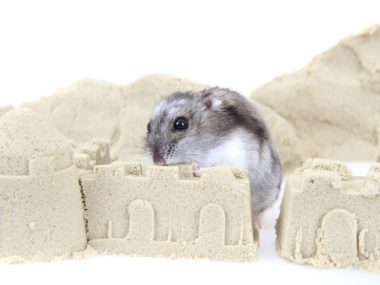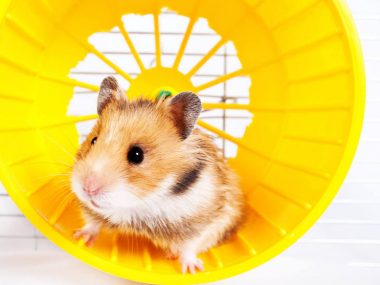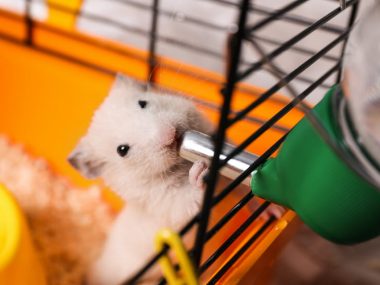If you have a hamster, then you know the importance of a cage to your furry friend’s health and comfort. But finding the right cage for your cute furball is easier said than done. So what are some of the things to keep in mind when choosing hamster cages?
Some of the main factors to consider when choosing hamster cages include size, cage design, accessories, and cost. It’s crucial to ensure that a hamster cage is comfortable and spacious enough for your tiny furball to thrive.
Read on to learn more about hamster cages and factors to consider when choosing one. I’ll also answer some frequently asked questions to guide you on how to choose the best hamster cage for your tiny family member.
Table of Contents
The Different Types of Hamster Cages
You may think that any old wire mesh or plastic container will do when it comes time to buy a new home for your favorite rodent – but nothing could be further from the truth.
A good quality habitat is essential if you want your pet to live a long and healthy life.
As many experts assert, poor housing conditions can lead directly to disease and even death in worst case scenarios.
Hamster cages come in different types from wire cages to plastic cages, and even glass aquariums.
Each type of cage has its own set of benefits and drawbacks, as explained below.
- Wire cages: Wire cages are the most popular type of hamster housing. They are affordable, easy to clean and provide plenty of space for your hamster to play. However, wire cages can be dangerous for small pets as they can easily escape.
- Plastic cages: Plastic cages are an excellent alternative to wire cages if you’re worried about your hamster escaping. They are also effortless to clean and come in various shapes and sizes. However, plastic cages don’t provide as much ventilation as wire cages do, leading to respiratory problems in some hamsters.
- Glass aquariums: These types of cages are ideal if you want to give your hamster a lot of space to play. They also offer good ventilation and come in a variety of sizes. However, they can be expensive and are more challenging to clean than other cages.
The best type of hamster cage depends on your individual needs and preferences. Be sure to consider all of the different options before making a decision. Armed with this information, you’re sure to find the perfect hamster cage for your furry friend.
What To Look For When Buying a Hamster Cage
Keeping a few things in mind is essential when buying hamster cages. The first consideration is size. Hamsters need plenty of room to run around, meaning you should lean more towards large hamster cages.
In addition to size, there are other important factors to consider when settling on the best hamster cage ideas. One is whether the cage has bars or solid walls. Some people prefer pens with bars, as they allow for more ventilation and provide a better view of the hamster. Others find cages with concrete walls easier to clean.
Another thing to consider is whether the cage comes with a built-in wheel or not. Most cool hamster cages come with running wheels, so you might want to invest in one to keep your hamster engaged and happy.
Finally, how much do hamster cages cost? Of course, price is always a consideration when making any purchase. Cages come in a wide range of prices, so it is essential to find one that fits your budget. Premium cages come with a lot of features that allow you to try out some unique hamster cage ideas.
When shopping for a hamster cage, keep these considerations in mind, and you are sure to find the perfect one for your furry friend.
How To Set Up Your New Hamster Cage
When you get a new hamster, the first thing you’ll need is to set up its cage. Here are some tips on how to do that:
Choose a location for the cage that’s out of direct sunlight and drafts. Hamsters like to have a quiet place where they can feel safe. Make sure the cage is big enough for your hamster to move around in.
The minimum size for a hamster cage is 24 inches (60.96 cm) long by 12 inches (30.48 cm) wide by 12 inches (30.48 cm) high. Line the bottom of the cage with bedding such as shredded paper, straw, or aspen shavings.
That will help keep your hamster’s home clean. Place a food dish and a water bottle in the cage. Be sure to change the water daily and clean the food dish weekly. Hang a toy or two in the cage to give your hamster something to play with.
Accessories That You’ll Need for Your Hamster
When you get a hamster, you’ll need to buy a few essential accessories to ensure your pet has a comfortable home:
- Cage: The first and most important piece of equipment is a cage. Hamsters can live in small cages, but they should have at least one level for playing and climbing. You can buy quality Ferplast Favola Hamster Cage from Amazon.com made by experts.
- Bedding: A layer of soft bedding is necessary to keep your hamster warm and cozy. You can use hay, straw, wood shavings, or recycled paper products, as shown in this video:
- Water bottle and food dish: Make sure your hamster has easy access to both freshwater and food.
- Toys: Hamsters love to play, so be sure to provide them with plenty of toys to keep them amused. You can find a wide variety of hamster toys at pet stores.
Tips for Keeping Your Hamster Happy and Healthy in Its New Home
When you bring your hamster home, there are a few things you can do to make sure they adjust well and stay happy and healthy. One of the most important things is to provide them with a suitable cage. Here are some tips on choosing the right one:
Make sure the cage has a lot of different levels and hiding places, so your hamster can explore. The cage should also have a solid bottom to prevent your hamster from escaping.
The bars on the cage should be close together to prevent your hamster from slipping through. If you choose a plastic cage, make sure it is non-toxic.
When setting up the cage, be sure to include a food dish, water bottle, and nesting box. You can also add some hamster-safe toys to keep your hamster amused. Be sure to clean the cage regularly to prevent bacteria from building up. Weekly cleaning should be adequate for most enclosures.
Frequently Asked Questions About Hamster Cages
What Is Better for a Hamster, a Cage, or a Tank?
The better option between a cage and a tank largely depends on personal preferences and your hamster’s needs. Tanks allow you to recreate a naturalistic environment for your hamster while cages are better for ventilation.
Hamsters are tiny animals, and they need a lot of space to run around and play. Therefore, a good rule of thumb is to provide your hamster with as much space as it would have in the wild.
If you’re opting for a tank, make sure it is big enough. A good size for a hamster tank is 10 gallons (45.46 liters). The biggest advantage of using a tank as a hamster cage is that it allows you to create a more naturalistic environment, which is vital for the health and well-being of your pet hamster.
When it comes to materials, wire cages are better for ventilation, while plastic tanks are better for keeping your hamster warm. However, if you live in a cold climate or your hamster tends to be a bit on the chilly side, choosing a tank over a cage might be a good idea.
Ultimately, the best type of hamster cage is the one that meets the needs of your pet. So take the time to consider all of your options and select the best one for your hamster.
Can Hamsters Have Two Cages?
Hamsters can have two cages. However, investing in one spacious and high quality cage is highly advisable as it will allow your hamster to settle in faster. Hamsters love to hide and might become uncomfortable if their cages are frequently interchanged.
What Should a Hamster Have in Its Cage?
According to the California Hamster Association, your hamster’s nutrition is essential. Therefore, a hamster should have a water bottle, a food dish, bedding, and toys in the cage. You’ll also need to provide a place for the hamster to hide.
Some good choices are an overturned cardboard box or a small tunnel.
What Should You Not Put in a Hamster Cage?
Some of the things you should not put in a hamster cage include sharp objects, chemicals, household plants, foods that are high in sugar or salt, large amounts of water, and live animals.
As naturally curious creatures that love to explore their surroundings, hamsters should not be exposed to dangerous items or harmful food substances in their cage.
Conclusion
Hamster cages come in all shapes and sizes, and it can be challenging to determine which one is best for your hamster. However, it is essential to select a big cage for your hamster to move around in, and that has plenty of accessories to keep your hamster entertained.
You should also ensure that the cage is easy to clean and safe for your hamster to chew on. If you are unsure which cage is best for your hamster, ask a veterinarian or pet store employee for advice.
